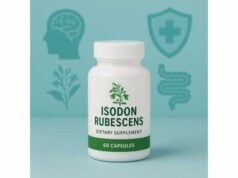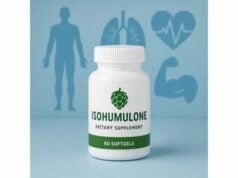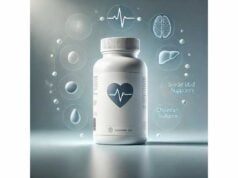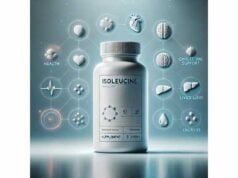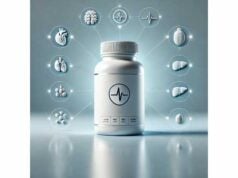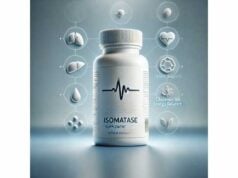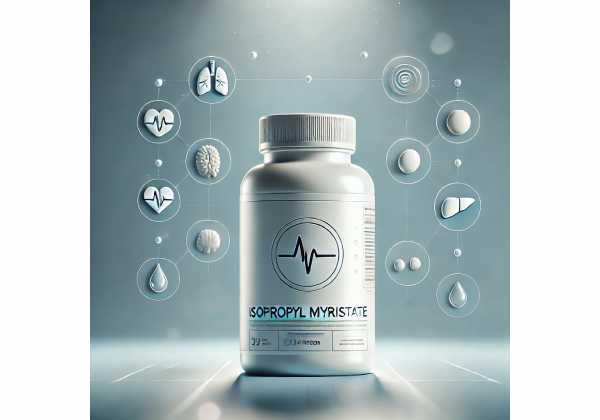
Isopropyl myristate (IPM) is a lightweight emollient and solvent made by combining isopropyl alcohol with myristic acid (a 14-carbon fatty acid). It is prized for creating a silky, fast-absorbing feel in creams, lotions, and makeup, and it also works as a chemical penetration enhancer—helping certain topical actives travel more effectively into the outer skin layers. Beyond cosmetics, IPM appears in medical and over-the-counter products, including non-pesticide head-lice solutions. This guide explains what IPM is, how it works, realistic benefits, smart ways to use it, and safety points you should know. You will learn practical concentration ranges (percentages), when IPM can help (and when it may not), and what to consider if you have acne-prone or sensitive skin. The goal is clarity and balance: enough depth to make confident decisions without hype.
Quick Overview
- Improves slip and skin feel; reduces greasiness; can aid active delivery in 2–10% leave-on formulas.
- A non-pesticide head-lice option uses 50% IPM applied to dry hair for 10 minutes, often repeated after 7–10 days.
- Penetration-enhancing action can also raise irritation risk from strong actives; patch test first.
- Typical ranges: 1–20% in leave-on skincare; 0.5–10% in cleansers; 50% for dedicated pediculicide solutions.
- Avoid or seek medical advice if you have very acne-prone skin, a history of contact dermatitis, are treating infants, or have broken skin.
Table of Contents
- What is isopropyl myristate and how it works
- Benefits you can expect
- How to use it in skin and hair
- Formulation and penetration factors
- Common mistakes and troubleshooting
- Safety, side effects, and who should avoid
- Research evidence at a glance
What is isopropyl myristate and how it works
Isopropyl myristate (IPM) is an ester: a molecule formed when isopropyl alcohol reacts with myristic acid (tetradecanoic acid). In finished products, IPM is clear, low-viscosity, and nearly odorless, which makes it easy to blend into oils and silicones as well as many emulsions. Two functional qualities explain its popularity:
1) Sensory and emollient profile. IPM provides “dry slip”—that silky, quick-spread feel without waxy drag. It reduces greasiness in rich oils and butters and can offset the tack of humectants like glycerin. Because it evaporates far more slowly than isopropyl alcohol and mixes well with lipids, it leaves skin soft rather than tight. In makeup and sunscreen, IPM improves spreadability and helps pigments lay smoothly. In haircare, it can reduce stiffness in styling products and improve combability.
2) Penetration enhancement. The outermost skin layer (stratum corneum) is a brick-and-mortar barrier of protein “bricks” (corneocytes) set in lipid “mortar.” IPM can partition into that lipid mortar and loosen its tight packing. This temporary lipid fluidization can increase the diffusion of certain small, lipophilic (oil-loving) actives through the stratum corneum. In pharmaceuticals, that makes IPM useful in gels, patches, and topical solutions where controlled enhancement is desirable. In cosmetics, this same property can make actives like salicylic acid or retinoids feel more effective—but it also means you should respect exposure time and total concentration to avoid over-delivery.
Where it shows up.
- Leave-on skincare: moisturizers, body oils, creams, serums, eye products.
- Color cosmetics: foundations, primers, lip products, sticks.
- Suncare: to improve spreadability and even film formation.
- Cleansers/removers: as a makeup and sunscreen solvent.
- Haircare: light oils, de-tanglers, leave-ins.
- Medical/OTC: pediculicide (head-lice) solutions; some analgesic or anti-inflammatory topicals as a co-solvent/enhancer.
Why the percentage matters. At low levels (≈1–5%), IPM mainly tunes texture. Mid-range levels (≈5–15%) contribute more emollience and solvent power. Higher cosmetic percentages (≈15–20%) intensify slip and cleansing; specialized medical products can be far higher (e.g., ~50% in certain head-lice solutions). Because IPM alters barrier lipids, changing its percentage can noticeably change a product’s feel and the speed of active penetration.
Comedogenicity—what it does and doesn’t mean. Classic rabbit-ear studies flagged IPM as potentially comedogenic at high, neat concentrations. Human data are more nuanced: finished formulas can test non-comedogenic even when they contain small to moderate amounts of IPM, but heavy, occlusive use or high-IPM oils may still trigger closed comedones in some acne-prone users. Practical translation: dosage and context matter.
Bottom line: IPM is a versatile emollient and delivery aid. Used thoughtfully, it improves product aesthetics and can support active performance; used carelessly, it can increase irritation potential or contribute to breakouts in susceptible skin.
Benefits you can expect
Smoother application and “dry” emollience. IPM cuts greasiness and adds glide, making heavy creams, butters, mineral sunscreens, and makeup bases spread thinly and evenly. If you dislike oily residue, IPM helps formulas disappear faster without losing softness. In sticks (deodorant, sunscreen, foundation), it lowers friction so the stick applies without tugging.
Enhanced delivery of select actives. By loosening stratum-corneum lipids, IPM can increase penetration of small lipophilic ingredients. In skincare, that often translates into quicker onset or greater local effect from actives such as salicylic acid, certain retinoids, azelaic esters, lipophilic antioxidants, or anesthetics. In drug products, IPM is frequently paired with other enhancers (e.g., propylene glycol, ethanol, certain fatty acids) to fine-tune delivery into or across the skin.
Better cleansing and makeup removal. IPM dissolves persistent film formers, long-wear pigments, and water-resistant sunscreen binders. As a component of oil cleansers and dual-phase removers (often at 2–20%), it helps lift residue that typical surfactants struggle with, reducing the need for aggressive scrubbing. That can be particularly helpful around the eyes or when you use water-resistant SPF.
Scalp-care utility. Certain non-pesticide head-lice solutions use ~50% IPM (often combined with volatile silicones) to dissolve the waxy cuticular hydrocarbons that protect lice and nits. The approach is mechanical/solvent-based, not neurotoxic, which can be useful where pesticide resistance is common.
Texture engineering and elegance in color cosmetics. In foundations, primers, and lipsticks, IPM improves slip, levels pigment, and reduces patchiness. It can also help volatile carriers evaporate more evenly so the end feel isn’t tight or flaky. In pressed powders and hybrid tints, small IPM additions reduce chalkiness and bounce-back.
Comfort in body care without heavy occlusion. If petrolatum or thick butters feel smothering, IPM can create a softer, breathable finish. Paired with humectants, it supports a more flexible barrier feel, especially in warm climates where heavy occlusives can be uncomfortable.
Cost and stability advantages for formulators. Compared with some specialty silicones or designer esters, IPM is widely available, blends easily, and helps solubilize fragrance and oil-soluble actives. It’s stable under typical cosmetic pH and temperatures, and it plays well with most emulsifier systems.
Where expectations should be modest. IPM is not a stand-alone treatment for dryness, acne, eczema, or pain. It complements actives; it isn’t an active itself. Its penetration-enhancing effect is selective—it benefits lipophilic, small molecules most. Hydrophilic macromolecules (e.g., peptides, hyaluronic acid) do not meaningfully penetrate more because of IPM alone.
Practical takeaway: expect better feel, cleaner removal of tenacious products, and—when well formulated—a modest boost to local delivery of certain actives. Use it to make routines more pleasant and effective, not as a cure-all.
How to use it in skin and hair
This section focuses on real-world concentrations, step-by-step use, and sensible frequency guidelines. Percentages refer to the amount of IPM in the finished product.
A) Daily skincare (leave-on)
- Lotions/creams (face or body): 1–10% for slip and lighter afterfeel; 10–20% for richer emollience that still feels “dry.”
- Face oils/serums: 2–10% to thin heavy oils and improve spread; higher levels may not suit acne-prone skin.
- Eye products: 1–5% to reduce drag and aid pigment dispersion in tinted balms.
How to apply (face):
- Cleanse, then apply water-based serums.
- Use your IPM-containing moisturizer or oil next.
- If using strong actives (e.g., retinoids, exfoliating acids), start with them two to three nights per week when switching to a higher-IPM base; monitor for increased tingle or redness as IPM may speed their uptake.
- Finish with sunscreen in the morning.
B) Cleansing/makeup removal
- Oil cleansers/balms: 5–20% helps dissolve long-wear SPF and makeup.
- How: Massage onto dry skin for 30–60 seconds, then emulsify with warm water and rinse. Follow with a gentle water-based cleanser if desired (double cleanse).
C) Scalp and haircare
- Leave-in sprays/serums: 0.5–5% for slip and easier detangling without heaviness.
- How: Mist or smooth through mid-lengths and ends; avoid heavy application at roots if your scalp is oily or acne-prone.
D) Non-pesticide head-lice solutions (pediculicide)
- Concentration: ~50% IPM solutions designed for this purpose.
- General regimen (follow your product label): Apply to dry hair and scalp until fully saturated. Leave on for 10 minutes, comb thoroughly to remove lice and nits, then wash out. Repeat once after 7–10 days.
- Notes: Avoid eyes and mouth, use in a well-ventilated space, and treat close contacts and bedding/clothing per public-health guidance.
E) Pairing with actives
- Works well with: salicylic acid, retinoids/retinoid esters, lipophilic vitamins (E, some forms of A), anesthetics, oil-soluble botanical extracts.
- Be cautious with: high-strength exfoliating acids, potent retinoids, and alcohol-heavy solutions—IPM can increase sting and erythema. Reduce frequency or buffer with a bland moisturizer if irritation appears.
F) Frequency and layering tips
- Daily use is typical in moisturizers and makeup.
- If you’re acne-prone, start with ≤5% IPM products and avoid heavy occlusion or thick layers under hot, humid conditions.
- For sensitive skin, patch test: apply a small amount behind the ear or on the inner forearm once daily for three days, then proceed if clear.
G) Storage and handling (DIY and pros)
- Keep tightly closed; store cool and away from flames—IPM is combustible in liquid form.
- Sanitize tools to avoid contamination; IPM itself is not a preservative.
Bottom line: Match the IPM percentage to the job—low for slip, moderate for cleansing, and specialized high-concentration products for lice—while adjusting your actives’ frequency if you notice stronger effects.
Formulation and penetration factors
1) Solvent system and co-enhancers. IPM’s enhancing power depends on the company it keeps. Mixed with short-chain alcohols (e.g., ethanol) or glycols (e.g., propylene glycol), it can carry small lipophilic actives into the stratum corneum more efficiently. Fatty acids (notably oleic acid) can synergize with IPM to further disrupt lipid packing. In medical gels, volatile silicones often balance fast spread and comfort while IPM slows evaporation and boosts solvency.
2) Oil phase composition. With lighter esters and volatile silicones, IPM yields a weightless finish. With heavy plant butters or waxes, it reduces drag and can mitigate wax crystallization so formulas apply smoothly. In sunscreens, it helps disperse inorganic filters and improves uniformity; in color cosmetics, it assists wetting of pigments and pearls for even payoff.
3) Emulsion type and particle size. In oil-in-water creams, IPM sits in the internal oil phase and migrates to skin on application; in water-in-oil creams and anhydrous sticks, it forms more of the external phase and affects immediate slip and occlusivity. Smaller emulsion droplets increase contact area and can intensify both sensorial effects and penetration.
4) Active chemistry and target depth. IPM primarily benefits small, lipophilic actives aiming for the epidermis or upper dermis, not macromolecules that struggle with the barrier. If the therapeutic target is surface-level (e.g., exfoliation or barrier support), over-enhancement isn’t helpful and can raise irritation risk. If the aim is local analgesia or anti-inflammatory action in the superficial dermis, modest IPM levels and correct co-solvents can help.
5) Skin condition and environment. Hydrated skin is more permeable; occlusion (e.g., heavy balms, plastic wrap) further increases flux. Heat and massage raise local blood flow and can speed absorption. Under high humidity and sweat, high-IPM formulas may feel slick; under very dry air, mid-IPM formulas can feel more comfortable than pure oils.
6) Dose control and volatility. IPM reduces the need for high shear during application. That means you can spread a small dose very far, which is ideal for elegant textures but makes over-application easy. Formulators counter this by tuning viscosity (e.g., waxes, gellants) and blending with faster-evaporating carriers so the film self-limits.
7) Stability and compatibility. IPM is generally stable in the cosmetic pH range (≈4–7.5) and compatible with common emulsifiers (nonionic, some anionic). It dissolves many fragrances and oil-soluble UV filters. It does not preserve water phases, so robust antimicrobial systems are still required.
Putting it together. For a gentle retinoid night cream: use an oil-in-water emulsion with 2–5% IPM, 2–3% low-viscosity silicone, and humectants to buffer irritation. For an oil cleanser that removes water-resistant SPF: consider 10–15% IPM with triglycerides and a mild nonionic surfactant to emulsify on rinse. For a targeted analgesic gel: combine 2–5% IPM with an alcohol/glycol blend tailored to the active’s solubility—and lock the formula behind usage directions that control exposure time.
Key message: IPM is a lever; the rest of the formula—solvents, fatty acids, emulsifier type, and even droplet size—decides how far that lever moves.
Common mistakes and troubleshooting
Mistake 1: Assuming more IPM is always better.
Symptom: Unexpected sting or redness when using your usual acid or retinoid.
Fix: Step down to a lower-IPM moisturizer or reduce the frequency of strong actives for 1–2 weeks. Add a bland buffer (e.g., apply a simple moisturizer first, then your active on top).
Mistake 2: Heavy, occlusive layering in heat or workouts.
Symptom: Closed comedones or scalp bumps.
Fix: Use thin layers and keep IPM ≤5% in leave-on face products if you’re acne-prone. For scalp care, apply only to lengths/ends or rinse out.
Mistake 3: Using IPM-rich removers around the eyes without care.
Symptom: Blurred vision or sting.
Fix: Apply to a cotton pad, press gently with eyes closed, and avoid flooding the lash line. Rinse with lukewarm water after removal.
Mistake 4: Pediculicide shortcuts.
Symptom: Live lice returning after treatment.
Fix: When using a 50% IPM lice solution, saturate dry hair thoroughly, wait the full 10 minutes, comb meticulously, wash out, and repeat after 7–10 days. Treat close contacts and wash or heat-dry bedding, hats, and brushes per guidance.
Mistake 5: DIY overexposure.
Symptom: Irritation from home-mixed oils or balms with high IPM.
Fix: Keep DIY leave-on formulas ≤10% IPM unless you have formulation experience. Patch test each batch.
Mistake 6: Confusing cleansing power with hydration.
Symptom: Tightness after makeup removal.
Fix: Follow IPM-containing oil cleansers with a gentle, low-foaming second cleanse only if needed, then apply a simple moisturizer.
Mistake 7: Ignoring flammability and storage.
Symptom: Strong fumes, headaches, or spills.
Fix: Store tightly closed, away from flames and heat sources. Use in ventilated areas—especially with high-IPM solutions.
When in doubt, simplify. If a new IPM-rich product seems to increase sensitivity, pause other strong actives, switch to a lower-IPM base, and re-introduce actives gradually. Most issues come from stacking enhancement (IPM + alcohol + acids + heat), not from IPM alone.
Safety, side effects, and who should avoid
General safety. IPM has a long record of safe cosmetic use across product categories. Standard safety assessments have concluded that myristate esters, including IPM, are safe as used in cosmetics, with reported use concentrations spanning very low (trace) up to high levels in specific product types. Human patch tests with finished products containing substantial IPM have generally shown low irritation and sensitization rates.
Likely side effects.
- Irritation/sting: More common when IPM is combined with acids, retinoids, or alcohol. Usually mild and reversible on dose reduction.
- Follicular congestion: Individuals who are highly acne-prone may notice closed comedones with high-IPM, occlusive layering—especially in heat/humidity or under helmets and masks.
- Contact dermatitis (rare): Sensitization to IPM is uncommon, but any excipient can trigger allergy in susceptible individuals. If you develop persistent itch, rash, or swelling, stop use and consult a clinician.
- Eye exposure: High-IPM removers can temporarily blur vision; rinse with water if exposed.
- Inhalation/ingestion: Not intended for ingestion; keep away from children. Use high-IPM solutions in ventilated areas.
Population cautions.
- Infants and young children: For head-lice treatment, use only age-appropriate, labeled products and follow pediatric guidance. Avoid unintended ingestion or eye exposure.
- Pregnancy and breastfeeding: IPM in cosmetics is generally considered low concern, but avoid unnecessary exposure to high-IPM medical solutions without clinician advice.
- Broken or diseased skin: Enhanced penetration can increase irritation; avoid high-IPM products on compromised barriers unless directed by a healthcare professional.
- Severe acne or folliculitis: Prefer lower-IPM, oil-free formulas labeled non-comedogenic, and introduce slowly.
Drug and device interactions. IPM can increase the local availability of certain topicals. If you use prescription retinoids, corticosteroids, or anesthetics, check whether your base already contains enhancers; adding additional IPM-rich layers may raise absorption and side-effect potential.
Home safety tips. Keep away from open flames and hot styling tools when using high-IPM hair and scalp products. Wipe spills from floors to prevent slips. Store tightly closed to limit odor and solvent loss.
Bottom line: IPM is broadly safe when used as intended. Most risks stem from pairing it with strong actives, using very high concentrations, or applying to vulnerable skin. With smart selection and dosage, it is a reliable helper, not a hazard.
Research evidence at a glance
Barrier modulation and delivery. Laboratory and modeling studies show that chemical penetration enhancers, including fatty acid esters like IPM, can fluidize stratum-corneum lipids and increase passive diffusion of suitably lipophilic actives. IPM is among the most frequently cataloged enhancers, and databases of enhancers list it as a standard reference compound. Contemporary reviews emphasize a balanced approach: enhancement can improve local effectiveness, but over-enhancement may increase off-target exposure or irritation—especially for small-molecule drugs that already penetrate fairly well.
Cosmetic safety and usage ranges. Independent safety assessments reviewing myristate esters—IPM among them—conclude they are safe in current practices of use. Reported cosmetic use concentrations span very low fractions of a percent in some categories up to high percentages in specialized products, reflecting IPM’s role in both light sensory tuning and heavy solvent action (for example, in removers and certain treatment solutions). Human testing with finished products containing substantial IPM has not shown consistent irritation or photosensitization, supporting its wide adoption.
Head-lice applications. Clinical and mechanistic studies have evaluated ~50% IPM solutions (often combined with volatile silicones) as non-pesticide pediculicides. The mechanism is physical: IPM dissolves the waxy hydrocarbon layer that protects lice and nits. Trials report effective louse killing and nit removal with 10-minute applications, typically followed by a repeat treatment about a week later to address any new hatchlings. This provides an alternative where resistance to neurotoxic agents is problematic.
Comedogenicity nuance. Classic animal and early human models flagged IPM as comedogenic at high concentrations used under occlusion. More recent human work suggests the comedogenic risk depends strongly on concentration, vehicle, and test conditions; some finished products containing potentially comedogenic ingredients can test non-comedogenic. For acne-prone users, the practical implication is to choose lower-IPM, lighter vehicles and monitor real-world response rather than relying on ingredient lists alone.
What’s still being refined. New reviews highlight individualized dosing and delivery designs that aim to deliver enough active to the right skin layer without overshooting into systemic circulation. In that context, IPM remains a useful—but not universal—tool. Its best use is intentional: paired with compatible actives, tuned by solvent systems, and matched to the therapeutic target depth.
Takeaway: The evidence base supports IPM as a safe, versatile emollient and solvent with well-characterized penetration-enhancing effects, meaningful utility in specific medical and cosmetic roles, and manageable risks when concentrations and context are respected.
References
- Final Report of the Amended Safety Assessment of Myristic Acid and Its Salts and Esters as Used in Cosmetics 2010 (Guideline)
- North American efficacy and safety of a novel pediculicide rinse, isopropyl myristate 50% (w/w) 2007 (RCT)
- Effectiveness of isopropyl myristate/cyclomethicone D5 solution of removing cuticular hydrocarbons from human head lice (Pediculus humanus capitis) 2012
- An Open Database of Chemical Penetration Enhancers 2021
- Topical drug delivery strategies for enhancing drug effectiveness by skin barriers, drug delivery systems and individualized dosing 2024 (Systematic Review)
Disclaimer
This information is educational and does not substitute for professional medical advice, diagnosis, or treatment. Always talk with a qualified healthcare provider about your specific situation—especially before using high-concentration isopropyl myristate products, combining multiple strong topicals, treating children, or applying products to broken or diseased skin. If you experience persistent irritation, rash, or worsening symptoms, stop use and seek medical care.
If you found this article helpful, consider sharing it with friends or colleagues on Facebook, X (formerly Twitter), or your preferred platform, and follow us for future guides. Your support helps us keep producing practical, evidence-informed content.

